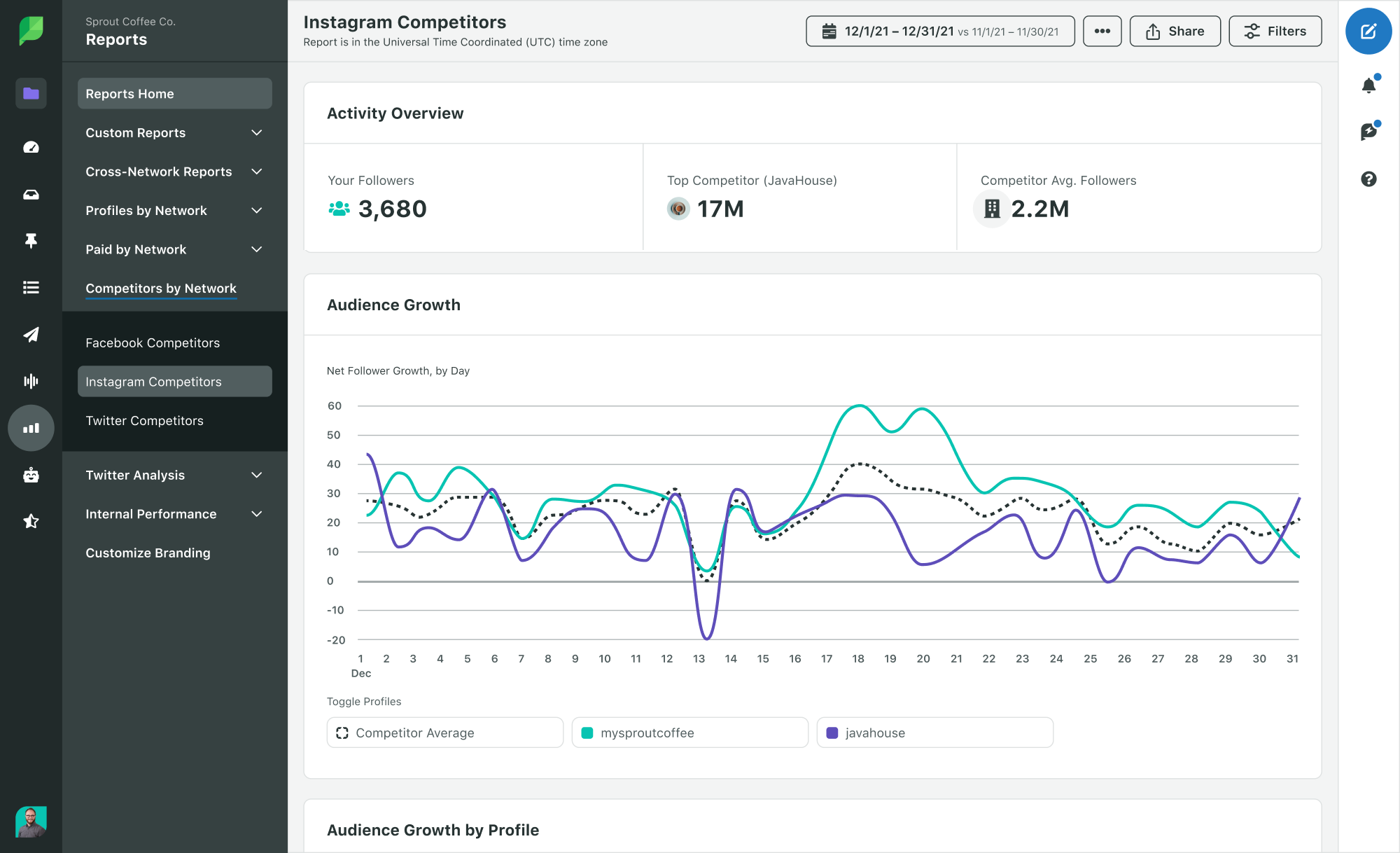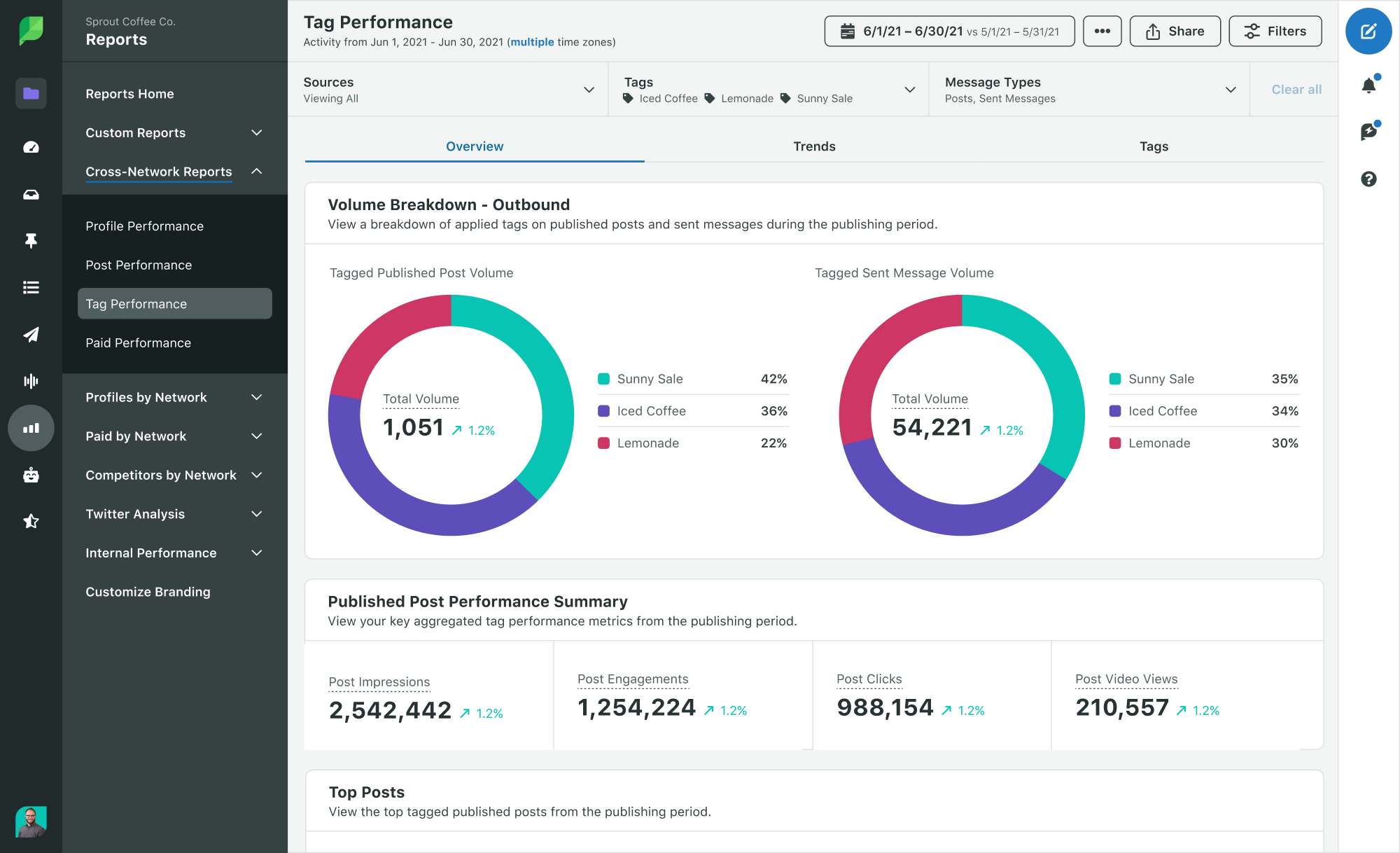Your business’s health and longevity means keeping a watchful eye on the public perception of your brand. There are more ways than ever for your audience to talk about you, but luckily, it’s never been easier to track your brand mentions through online brand monitoring and have a comprehensive understanding of how people feel about your brand.
What is brand monitoring?
Brand monitoring is the process of tracking different channels to identify where your brand is mentioned. Knowing where and how people are talking about your brand people are talking about your brand will help you better understand how people perceive it, and lets you collect valuable feedback from your audience. You can also keep an eye on potential crises and respond to questions or criticism before they get out of control.
Brand monitoring vs. social monitoring
Whereas social monitoring focuses on just the social media coverage your brand gets, brand monitoring encompasses social media as well as everywhere else people are talking about your brand. Brand monitoring combines social monitoring and social listening, along with methods of tracking brand mentions on other non-social media channels to collect audience insights.
Why brand monitoring matters
As a brand, it’s important to care what the audience you’re serving thinks. You might not agree with some of the conversations you see around your brand, but this gives you an understanding of the general sentiment around your brand and products. Your public perception and how you respond to public feedback can play a huge role in brand growth.
Here are a few of the ways that brand monitoring can have an impact on your business.
Understanding sentiment
Brand monitoring can help you better understand the overall sentiment that people have towards your brand. A sentiment analysis looks at the specific language used in comments about your brand and can tell you if people are speaking about your brand with a positive, negative, or neutral sentiment.
This is a great way to read between the lines and observe, on a large scale, how people are reacting to certain posts, campaigns or your brand in general. Monitoring tools like Sprout Social let you access a detailed sentiment analysis. Sprout’s social listening tools comb through your post comments and mentions to create a sentiment summary that shows you how your audience feels about your brand.

Reputation and crisis management
Monitoring your brand can help you stay on top of your reputation and handle customer issues before they get out of control. Listening to reviews and feedback online and having a process for responding and handling those issues can increase audiences’ trust in your brand and show that you actually care about what customers are saying.
Identifying issues and improvements
In addition to monitoring your brand’s reputation, it’s also important to monitor for potential feedback that can help you identify necessary improvements to your product or service. When gathering feedback from your audience, make sure that you have a good process in place. It’s just as important to have a system to relay the feedback you get online to the proper teams in your organization who can implement those changes and updates.
Find out more on how brands implement takeaways from conversations about them with our guide to 40 specific ways social listening can impact your business.
Creating two-way communication
When you know where people are talking about your brand, it is so much easier to respond. Publicly responding to reviews or comments shows your audience that you are actively listening to what they are saying.
It also shows that you are readily available to answer questions and assist customers. When you miss the chance to respond to questions or criticism online, it might appear that your brand is unavailable or not listening to feedback.

Identify user-generated content
User-generated content can act as a great complement to your content strategy. By monitoring your brand mentions, you can see who is sharing content about your brand. This is also a great way to find new influencers to work with who are true ambassadors of your brand and source new content for your social media channels.
What brand elements should you monitor?
When monitoring your brand, it’s tempting to monitor every mention of your brand everywhere people might be talking about it. But it’s important to be intentional about what you’re monitoring and the channels you choose to keep an eye on. This prevents you from collecting an overwhelming amount of data that’s difficult to draw conclusions from, and helps you get more clarity out of the results you find.
Some of the main channels to monitor are:
- Online news media
- All social media platforms
- Online forums such as Reddit and Quora
- Online review sites such as TripAdvisor or Yelp
- Print media (if you have the resources to check relevant publications actively)
In addition to tracking the right channels, make sure you’re tracking all of the elements of your brand that might receive publicity. When deciding what elements to monitor, choose ones that are relevant to your brand and industry. Here are a few of the key brand elements to consider monitoring for conversations mentioning your brand.
Name variations
Make a list of all of the ways people refer to your brand. This can include nicknames, blog names and other variations of words that your brand is associated with. Some people may use different spellings or abbreviations of your name, so it’s important to track all the variations you know. Keyword research on the searches your brands’ web presence receives can help you identify variations and even common misspellings.
In addition to variations of your brand name, it’s also a good idea to track variations of your campaigns or product names in case you receive publicity or comments referring those specific aspects of your brand. All of this will help you stay informed on the conversation around your brand, even when your audience doesn’t directly mention brand accounts.
If you just can't wait for the holidays, you can recapture some festive flavor with a Caramel Latte made with blonde espresso and almondmilk. You can also add a pump of toffeenut syrup!
— Starbucks Coffee (@Starbucks) October 13, 2020
Competitors
It’s good to know what your competitors are up to and what their audience is talking about to make sure you’re up to date on the latest industry news. You can analyze your competitors to set a benchmark for assessing how your brand measures up to other similar brands in your industry.
Many online brand monitoring tools let you run a competitor analysis to measure how your social media activity compares to others. Sprout’s competitor report lets you compare your presence to competitors on every platform to track how your performance changes over time.

Track your metrics over time alongside the information you gather through brand monitoring to see how everything from industry news to changes in your content strategy influences your audience growth and engagement.
Brand monitoring can also help you understand the impact of specific tactics you’ve incorporated in your wider strategy, like influencer partnerships and campaigns. If you’ve created hashtags for those efforts, or tagged your posts in Sprout, you can bucket and track these posts to understand what types of campaigns and response efforts succeeded, and which ones failed to connect with your audience.

Industry buzzwords and trends
If you’re in a specific niche, it’s a good idea to keep track of trends or buzzwords in your industry. Even if these conversations don’t mention your brand directly, it helps to be informed about what’s being said about your industry as a whole. This can also be a good source of inspiration for new content ideas or to join the conversation in innovative ways.
Joining in on conversations that aren’t just customer service- or complaint-driven helps show that your brand is active in your overall industry, and just as involved in the latest news or trends as the dedicated audience in your niche is.
*looks out window* pic.twitter.com/sAyaTmXGUt
— Xbox (@Xbox) October 13, 2020
CEOs and public figures
You should also monitor mentions of public figures or spokespeople for your brand or a specific campaign. Make sure you’re monitoring conversations around your CEO or any other prominent figures associated with your brand. Even if the news around the person isn’t directly related to business operations, how someone within your company is portrayed in the media can have an impact on perception of your brand as a whole.
The value of brand monitoring
Brand monitoring can make it easier to identify how people feel about your brand. This knowledge can inform your marketing decisions and help you create campaigns your audience will love. When you can spot negative comments, you can more easily offer assistance and responses, and control the message being put out. The more you monitor, the more you’ll know about your industry and how your brand stands up to the competition.
To learn even more about how customers want to interact with brands and how to identify untapped potential in your marketing campaigns, check out our latest Sprout Social Index.
This post What is brand monitoring and why is it important? originally appeared on Sprout Social.
Source Sprout Social https://ift.tt/2oH8230

ليست هناك تعليقات:
إرسال تعليق